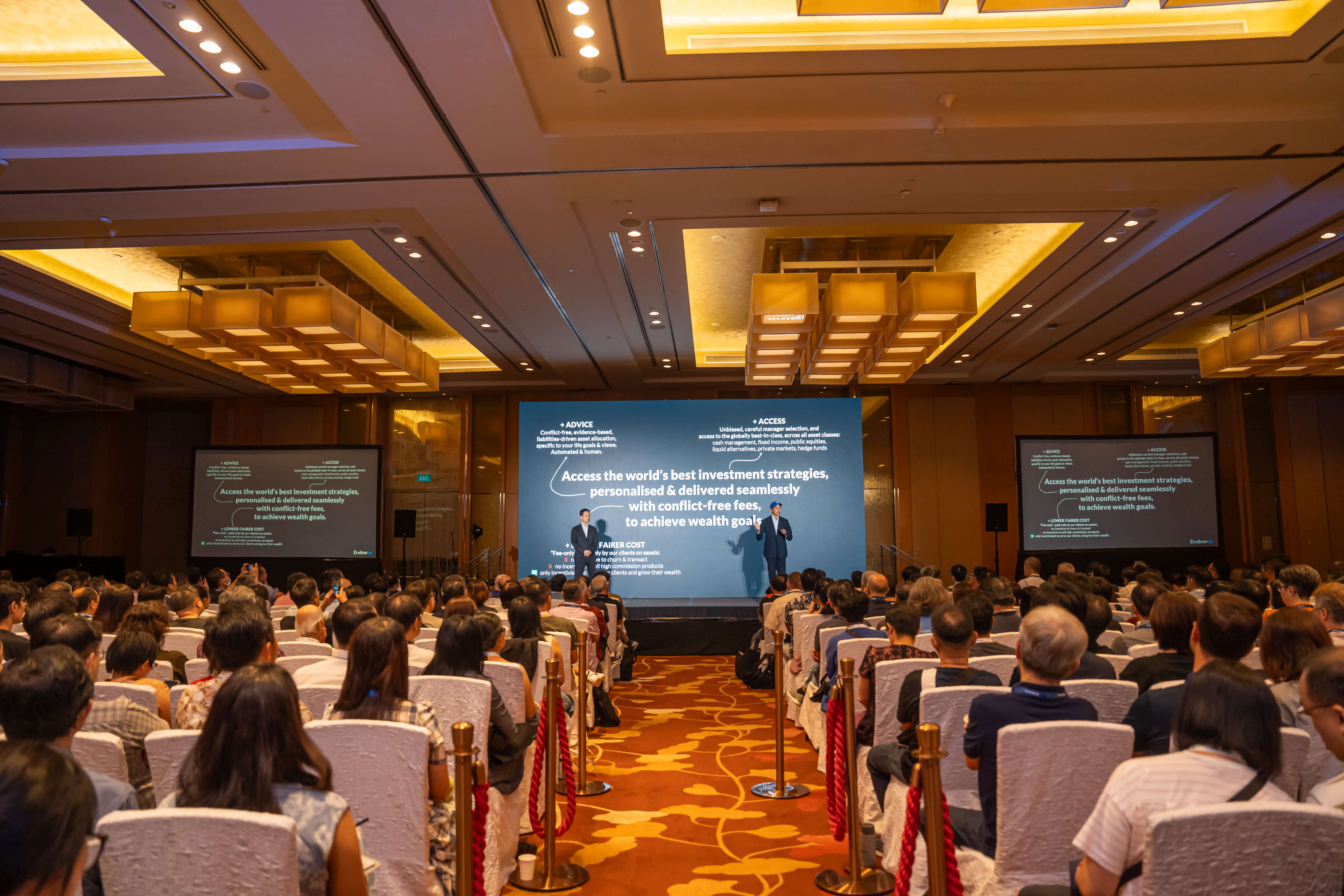Register for the event
Endowus invites you to our exclusive event with Macquarie Asset Management, as we discuss unlocking opportunities in Infrastructure- a $1.3tn asset class.
This event is reserved for Accredited Investors (AIs) only. To register for the event, please indicate one of the following:
- Discover how Endowus can complement your SSB investments with globally diversified, multi-asset portfolios for optimal wealth growth.
- Understand the benefits, risks, and considerations of SSBs, including interest rates and their role in financial planning.
- Learn how to maximise returns with SSBs and compare them to alternative investment options for a well-rounded portfolio strategy.
Singapore Savings Bonds (SSBs) have been a popular investment vehicle for investors seeking safety and yields.
These government-backed securities offer a unique opportunity for investors to participate in the bond market with minimal risk.
This guide walks through the mechanics of SSBs, their benefits, and how they fit into one’s broader investment strategy.
What are Singapore Savings Bonds?
Introduced in 2015 to offer individuals a safe, long-term and flexible product to meet their savings needs, Singapore Savings Bond (SSB) is a type of low-risk investment option and is issued every month.
Each Savings Bond has a 10-year tenure but can be redeemed in any month before the bond matures with no penalty. Key features of SSBs include:
- Fully backed by the Singapore government
- Flexible redemption without capital loss
- Low minimum investment of S$500
- Maximum individual limit of S$200,000
- Regular semi-annual interest payments
How are SSB interest rates determined and paid?
The rates on SSB are determined based on the prevailing Singapore Government Securities (SGS) yields. SSBs offer step-up interest rates, meaning returns increase the longer one holds them.
This step-up feature means that if one redeems one’s SSB early, one will receive the lower rates paid in the initial years. If one holds it for the full 10-year term, one will benefit from higher interest rates in later years, potentially earning returns comparable to long-term SGS.
It is important to note that SSB interest rates are fixed at issuance, providing certainty for one’s investment planning. The rates for each new SSB issue are announced monthly, allowing one to compare and choose the most suitable option for one’s financial goals.
SSBs pay interest every six months. If you choose to redeem your bond before the scheduled interest payment, you will receive a pro-rated amount known as the accrued interest.
How to subscribe and redeem SSBs
Each Savings Bond has a term of 10 years. To apply, an individual CDP account is required for cash applications or a Supplementary Retirement Scheme (SRS) account for SRS applications.
Applications can be made through various channels, including internet banking portals and the ATMs of local banks.
At maturity, that is the end of 10 years, the principal and the last interest payment will be automatically credited to the bank account linked to the CDP account (for cash applications), or to the SRS account (for SRS applications).
Benefits of investing in SSBs
As a government-backed security, SSBs provide one of the safest investment options available, ensuring one’s capital is protected. They are particularly suitable for those seeking to preserve capital, such as retirees or individuals nearing retirement.
Another key benefit is the regular interest payments, which are credited to one’s bank account every six months. The interest rates on SSBs also increase over time, rewarding one for holding them longer.
One can access the funds at any time without penalties after the first month. Redemption before maturity only forgoes the stepped-up interests.
With a low minimum investment of S$500, SSBs are accessible to a wide range of investors. Additionally, the interest earned is tax-exempt, further enhancing the returns.
Risks and considerations of SSBs
While SSBs are considered a safe investment, there are three factors one should consider before investing.
- Interest rate risk: The step-up interest structure may not keep pace with rising market rates. This could lead to an opportunity cost, where one might miss out on potentially higher returns from other investments.
- Inflation considerations: Returns on SSB may not always outpace inflation, potentially resulting in negative real returns over time.
- No secondary market before maturity: Redeeming SSBs early will result in lower returns due to the step-up interest structure.
Using SSBs in a portfolio
Singapore Savings Bonds are designed to provide a safe way to save for the long term while maintaining liquidity. As low-risk instruments, SSBs offer a safe haven for capital preservation while providing steady yields. SSBs are particularly suitable for conservative investors or those nearing retirement, as they provide flexibility to access funds within a month without penalties.
For younger investors with a higher risk appetite, SSBs can serve as a stable foundation, balancing out riskier investments.
While SSBs provide stability, they may not outpace inflation alone. For those who can stomach measured risks, consider diversifying a portfolio with a mix of assets to balance risk and returns for long-term growth alongside one’s SSB holdings.
Ultimately, the choice depends on one’s risk tolerance, investment goals, and liquidity needs. It's crucial to research and understand each option before investing.
Frequently asked questions about SSBs
What are SSBs among the safest investment options?
SSBs are fully backed by the AAA-rated Singapore government. One is guaranteed to receive the principal.
How can one purchase SSBs?
SSBs can be purchased using cash or SRS funds, but not with CPF monies. Interest earned from SSBs is tax-exempt, providing an additional benefit for investors.
What is the redemption requirement?
SSB holders can redeem in any given month before the bond matures, with no penalty for exiting your investment early.









.webp)




%20(1).gif)






%20F1(2).webp)

.webp)






.webp)